
The Department of Justice and Correctional Services would like to wish everyone a great holiday season. We hope that this time brings peace, tranquility, and joy while also serving as time to reconnect and share precious times with our loved ones. It is this time of the year that we come together as a community to celebrate and support each other. It is a time when we have the opportunity to spend time on Eeyou Istchee.
Be safe and present, we look forward to the year ahead and all that we can accomplish.

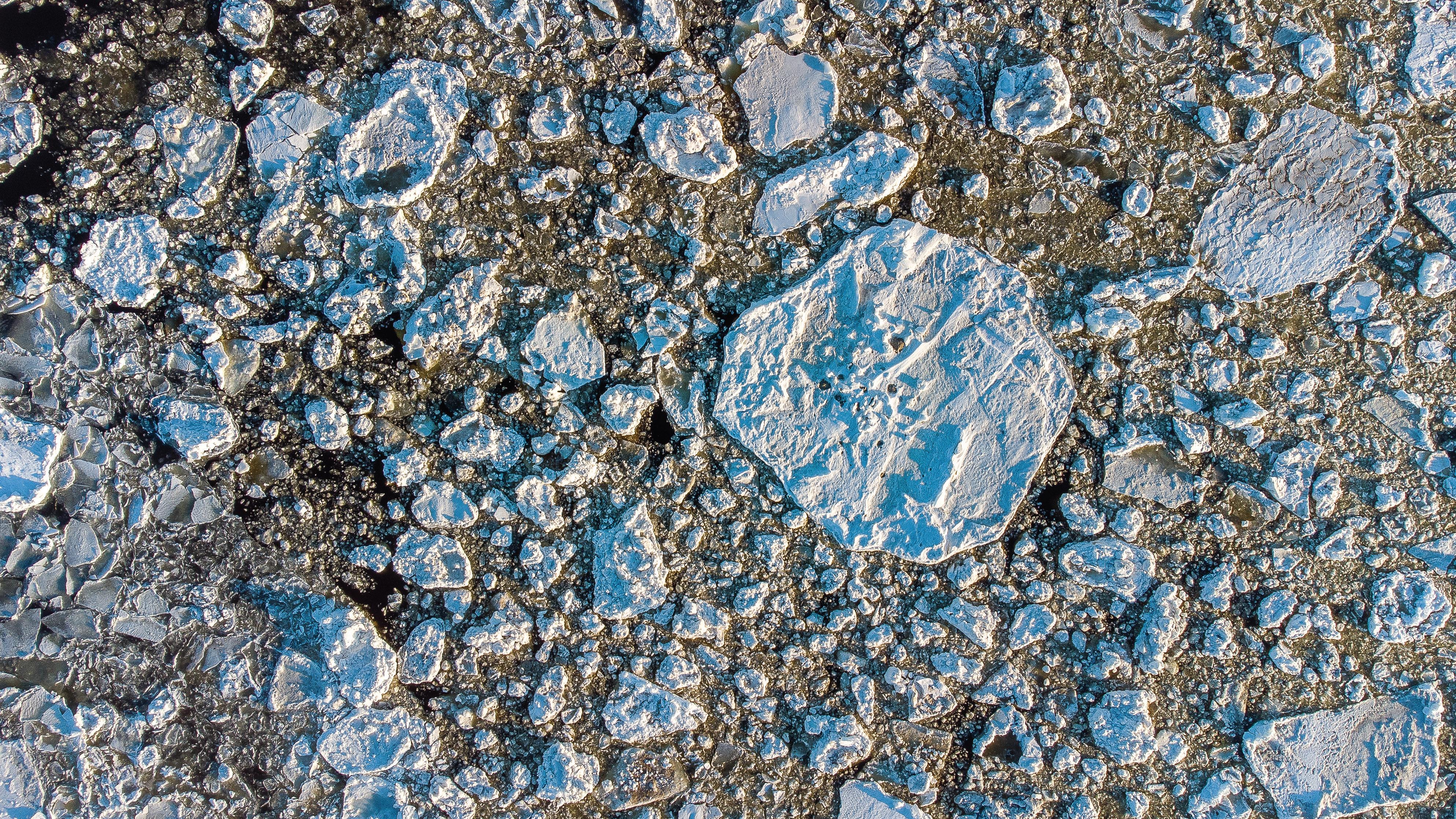
Merry Christmas and Happy New Year!















EDITORIAL Laws and flaws NEWS Shots taken at gun bill Natural selections IN BRIEF FEATURES Guarding the bays 2022 in review Moccasins on the ground Naming the stars REZ NOTES Prepping for Christmas PUZZLES 4 5 6 9 10 16 20 22 25 26 CONT ENTS 16 22 Hudson Bay Summit 10 1 800 361-2965 1 800 661-5850 ᐅᕙᓂ ᐱᒋᐊᕐᐳᖅ ᓄᓇᕕᒃ Nunavik Starts Here RESERVATIONS 1 800 361-2965 ᖃᖓᑦᑕᔫᓂᒃ ᐊᑦᑕᑐᐊᖃᕐᓂᖅ CHARTERS 1 800 661-5850 ᐅᕙᓂ ᐱᒋᐊᕐᐳᖅ ᓄᓇᕕᒃ Nunavik Starts Here Indigenous Guardians Network Looking back at 2022 Working towards a common vision of a marine environment 20
Politics Community
Photo by Gerald Ludwig
Laws and flaws
by Will Nicholls
The New Year is already upon us. It seems like it comes faster each time we complete our annual trip around the sun. When you are young you can hardly wait to be a year older. Later in life, the years appear to pick up speed when we wish time would slow down.
Looking back, we can see some patterns. They tend to respond to what people think, but in mainstream society it’s like a pendulum swinging back and forth.
Growing up as a First Nations person who attended residential school, I experienced the racism firsthand and could see how it harmed everyone. The laws that protected most Canadians didn’t exist for Indigenous people. When the RCMP would come to pick up kids they would go into homes without a warrant. Kidnapping “Indian” children was seen as acceptable in mainstream society.
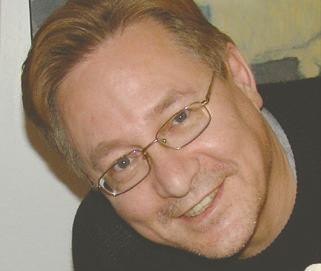

Ask your grandparents how some kids were hidden away while they still had to make the agonizing decision about which children were to be sacrificed to the laws that the Canadian government applied to Indigenous peoples. RCMP officers would even pick through clothing to check their sizes to ensure kids weren’t being left with their parents and their culture.

Cree parents would say this was because they saved the clothes since they couldn’t afford more. It was true but they did manage to save a few kids.
That’s the way it was. Despite treaties and agreements what was supposed to be an equal relationship between two peoples quickly changed. At times there would be the guilt over what had been done that would encourage a new outlook on relationships between Canada and its Indigenous peoples.
But most Canadians are not Indigenous and do not know them. Without knowledge of each other we are living in different worlds. As a Cree with a non-Cree mother to my children both of us tell the kids not to go to the police outside of the Cree communities.
In any society this should not happen, but we know systematic racism is a reality in Canada. Despite Quebec’s Viens Commission and other attempts to create a system that treats us all equally it falls short of its goals.
There are civil servants and elected representatives who sincerely attempt to improve the relationship, but the higher-ups seem to have another agenda in most cases. In some cases, they can slow down the work until the four-year lifespan of a government has passed, but not always.
Take the new amendment to Bill C-21, which purports to ban assault-style weapons, but will in fact allow the federal government to ban hundreds of gun types. We agree that pistol-grip and automatic weapons are not efficient for hunting. But

their ban includes hunting rifles that are used to bring home the food everyone needs.
The exploitation of natural resources in traditional territories in the North creates a real threat to our food security. Then to criminalize the tools Indigenous people use to harvest their food because you do not understand how we feed your families should be a crime. So much for reconciliation.
When someone has never been in a situation of food insecurity, wondering how to feed their children, it is difficult for them to empathize with our reality. The struggle continues to defend our way of life with educating Canadians about the ways we live.
We are not looking for a hand-out but a real and meaningful partnership in the future of all the peoples of Canada. As a New Year dawns, let’s make that pattern one that all Canadians can feel good about instead of looking at history repeating itself.
4 the Nation December 23, 2022 www.nationnews.ca
CONTRIBUTING WRITERS
Orr, P. Quinn, B. Powless DESIGN Ashley El Jachi, Matthew Dessner, SALES AND ADVERTISING Danielle Valade, Donna Malthouse THANKS TO: Air Creebec CONTACT US: The Nation, 4529 CLARK, #403, Montreal, QC., H2T 2T3 EDITORIAL & ADS: Tel.: 514-272-3077, Fax: 514-278-9914 HEAD OFFICE: P.O. Box 151, Chisasibi, QC. J0M 1E0 www. nationnews.ca EDITORIAL: will@nationnews.ca news@nationnews.ca ADS: Danielle Valade: ads@nationnews.ca; Donna Malthouse: donna@beesum.com SUBSCRIPTIONS: $60 plus taxes, US: $90, Abroad: $110, Payable to beesum communications, all rights reserved, publication mail #40015005, issn #1206-2642 The Nation is a member of: The James Bay Cree Communications Society, Circle Of Aboriginal Controlled Publishers, Magazines Canada Quebec Community Newspaper Assn. Canadian Newspapers Assn. Les Hebdos Sélect Du Québec. Funded [in part] by the Government of Canada. | www.nationnews.ca | facebook.com/NATIONnewsmagazine | Twitter: @creenation_news CMC A AUDITED Editorial
The Nation is published every two weeks by Beesum Communications EDITORIAL BOARD L. Stewart, W. Nicholls, M. Siberok, Mr. N. Diamond, E. Webb EDITOR IN CHIEF Will Nicholls DIRECTOR OF FINANCES Linda Ludwick EDITORS Lyle Stewart, Martin Siberok PRODUCTION COORDINATOR AND MANAGING EDITOR Randy Mayer
S.
The struggle continues to defend our way of life with educating Canadians about the ways we live
Legal Illegal
Shots taken at gun bill
by Ben Powless, Local Journalism Initiative Reporter
The federal government’s bill to reduce gun violence is being criticized after revelations that it would ban rifles and shotguns currently used by hunters across the country.
Bill C-21 was intended to target handguns. However, the Trudeau government introduced several amendments after the bill passed second reading last June, adding a new list of guns to be restricted.
The amendments target nearly any firearm with a magazine capacity above five cartridges, even if a particular gun was equipped with a legal magazine.
Other restrictions are on high-calibre rifles and ordinance, which is aimed at powerful military-style weapons. This would ban any gun capable of generating over 10,000 joules of energy or equipped with a muzzle greater than 20 millimetres.
However, critics say that these will target many firearms not just used by hunters, but also antiques, cannons used by historical roleplay groups, and collectibles.
Tony Bernardo of the Canadian Shooting Sports Association told CBC News that one gun on the blacklist is the Soviet-designed SKS semi-automatic rifle. He said estimates put the number of
SKS rifles in circulation across Canada at over 500,000.


Though the rifle was not included in the original 2020 “assault rifle ban” because it was not a modern design, being originally designed in 1945, Ottawa included it after it was used in several mass shootings.
Bernardo said that because the gun was unrestricted, the government has no way of knowing who owns the rifle, which is particularly common with Indigenous and sustenance hunters. SKS owners could face prison sentences of up to 10 years.
“The consequences of this are absolutely huge and, quite frankly, totally uncalled for,” he said.
The Tŝilhqot’in National Government (TNG) questioned the newest amendments, underlining that hunting rifles are protected by the Indigenous right to hunt under Section 35 of the Constitution Act, 1982. The TNG said that their hunters use rifles to hunt deer and moose in their territory.
“Hunting is an Indigenous right protected under Section 35 of the Constitution,” TNG Chief Joe Alphonse said in a statement. “Limiting the type of guns we can use for hunting would
severely limit our ability to hunt. Gun violence needs to be addressed in Canada. We applaud countries like New Zealand and Australia that have dramatically reduced gun violence through gun bans – but any law must take into account the environment it exists in.”
After the initial uproar, including by hunting groups, and provincial and territorial leaders, Prime Minister Justin Trudeau defended the bill by stating, “We’re not going after hunting rifles or shotguns. We’re targeting the most dangerous weapons.”
Stanley Mianscum of the Mistissini Cree Trappers’ Association said that many hunters use weapons with magazines of up to eight cartridges. He is concerned that members could be criminalized if C-21 is passed into law.
Mianscum said he hadn’t yet heard directly from members, but that on social media many people were attacking the bill. If the government tries to seize guns used by hunters, Mianscum said it could “start a war.”
Reggie Bearskin of the Chisasibi Cree Trappers’ Association advised the government “not touch hunting guns, that’s what we have here.”
www.nationnews.ca December 23, 2022 the Nation 5 Editorial News
Critics concerned that Bill C-21 would target hunting rifles, shotguns
UN conference in Montreal advances ambitious conservation goals
Quebec Premier François Legault committed his government to protecting 30% of the land in Quebec by 2030 during the opening of the United Nations Convention on Biological Diversity (CBD) conference in Montreal on December 6.
The plan would almost double the amount of protected territory from the current 17%, putting the province in line with a global coalition of countries – including Canada – that are pushing to ensure 30% of all lands and marine areas remain protected.
Legault said the “Nature 2030 Plan” would give Quebecers more access to nature, protect threatened and vulnerable species, and support Indigenous leadership in biodiversity conservation.
The plan would have a budget of almost $1 billion over the next 11 years. “Quebec is lucky to have a vast, magnificent territory. It’s very precious,” Legault said. “And we have a duty to bequeath the beauty of this territory to our children.”
Prime Minister Justin Trudeau reiterated the federal government’s plans to protect 25% of all of Canada’s land and oceans by 2025, and 30% by 2030. He also said that 120 countries had agreed to the ambitious target.
Grand Chief Mandy Gull-Masty told the conference of the Cree Nation Government’s aim protect 50% of Eeyou Istchee by 2035. Currently, 23% of the territory’s 400,000 square kilometres is protected after Quebec and the CNG announced an additional 39,000 square kilometres would be protected in 2020.

This prohibits industrial development in these areas, including forestry, mining and hydroelectric dams.

After engaging with communities and tallymen, and cataloguing data such as wildlife areas, spawning and

6 the Nation December 23, 2022 www.nationnews.ca
Photo and story by Ben Powless, Local Journalism Initiative Reporter
importance of life insurance,
Natural selections
calving grounds, watersheds and headwaters, the information was tallied in a computer program that provided the CNG with options for protected lands. But GullMasty made clear that Cree authorities intend to protect more.
When the CNG made their proposals to the provincial government in October 2019, their data sets nearly matched Quebec’s, which showed her that Indigenous knowledge was on par with Western knowledge.
“We were able to get 23% protected, but we want to build on that and get another 30% set aside,” Gull-Masty said in her presentation. “It may allow non-industrial development – we’re still arguing with Quebec about that.”
She said she thinks this could serve as a model for all 11 Indigenous nations in Quebec. However, she was still concerned about what Quebec means by protected areas in its statement.
“Indigenous Peoples want a very high level of protection, while the government wants more flexibility,” Gull-Masty explained. She wanted to make sure the Cree Nation ends up with 30% of its territory protected, not just receiving a portion of the 30% of Quebec’s commitments.
Asked if the Crees could self-declare a protected area, as other Indigenous communities have, Gull-Masty said they
had looked at that option when establishing the first 23%, but decided they wanted government recognition.
She said though that this was not off the table if Quebec doesn’t protect the areas the CNG deems as high priority.
“If we need to, we have the guts to declare areas set aside and ensure we have a strong voice to let industry know there is zero acceptability in these areas, they’re precious to us,” she told the Nation. However, she said the success in obtaining the first protected areas gives the CNG the confidence it neeed to continue the partnership.
The Cree received $5.4 million in federal funds in 2019 to sustain conservation efforts through 2024, with contributions from the province and philanthropic groups. Gull-Masty said that money was going towards protected areas and several baseline projects and studies.
These include studies that monitored marten populations around Waswanipi and Waskaganish in winter 2022, moose population surveys planned for winter 2023, recording units deployed for breeding bird surveys near Mistissini and Wemindji, and environmental DNA research into yellow sturgeon and other at-risk and culturally significant species.
They also include Cree culture baseline studies to help develop a cultural
resource management policy, define ethical research guidelines, digitize archival archeological material, and create an Elder-youth video series on Cree culture and environmental values.
The CNG also began a feasibility assessment on establishing a National Marine Conservation Area in eastern James Bay.
Part of the CBD negotiations revolve around how contributions to the Global Environmental Fund would work, and if Indigenous communities would be able to have direct access to those funds.

In that same presentation, it was revealed that the CNG is looking at collecting industrial land taxes that normally go to the federal and provincial governments. They are also looking at carbon offsets, green banks, establishing Indigenous Land Trusts, while seeking more federal funding.
Gull-Masty said the CNG expects a part of the “huge financial announcements” made at the negotiations, which include Canada’s commitments to a new First Nations National Guardians Network.
www.nationnews.ca December 23, 2022 the Nation 7








PROTECTS US AGAINST THE FLU Vaccines are our best tool to prevent against severe disease and hospitalization creehealth.org/covid/ how-many-doses-vax-need UP-TO-DATE COVID-19 VACCINATION PROTECTS US AGAINST COVID-19 CBHSSJB_FLU2022_NationAds.pdf 2 2022-11-01 3:29 PM
New CNG Deputy Executive Director
Melissa Saganash was named the Cree Nation Government’s new Deputy Executive Director December 7, taking over from Michael Petawabano, who was elected Chief of Mistissini in August. Grand Chief Mandy Gull-Masty made the announcement at the Grand Council board.
Following the retirement of Bill Namagoose after nearly 35 years, Saganash joins new Executive Director Davey Bobbish in administering the CNG’s daily operations, overseeing relations with all Cree communities and representing the Nation at federal and provincial levels.
“I look forward to working with Davey to make sure the 450 people employed at the CNG are happy and find their place in the organization. It’s a privilege to work for so many people,” said Saganash.
The deputy executive director is responsible for managing CNG offices in Nemaska and Montreal, overseeing departments such as Apatisiiwin Skills Development, Department of Commerce and Industry, Child and Family Services, Social and Cultural Development Department and Fire Protection Services.
Saganash had been the CNG’s director of CreeQuebec relations since 2014, which also involved maintaining relationships with
other Indigenous groups. She was responsible for working behind the scenes to advance Cree rights while ensuring provincial legislation is aligned with traditional, economic and social activities in Eeyou Istchee.
“I’ve been in all the discussions with the province, and we worked very hard on some of the major events like the Viens Commission,” she explained. “Most of the bills you see, we work hard to make sure they’re not infringing on the rights of our people to hunt, fish and trap. I feel privileged to have been able to work alongside Bill [Namagoose] for all these years.”
While the Cree Nation has had a largely positive relationship with Premier François Legault, some leaders criticized his recent remarks about developing more hydroelectric dams in the province. Saganash is confident that productive dialogue will continue with the structures in place.
“One of the strengths of the Cree Nation is we’ve always been able to work with the government in place,” asserted Saganash. “It’s easier to try to be open and work with whoever is there, see where we can find some common ground. We’re not going anywhere – they’re not either, apparently.”
Ouje loses George Shecapio-Blacksmith
Respected Ouje-Bougoumou Elder George ShecapioBlacksmith passed away December 3 at the age of 77 in the presence of his family. He is survived by his wife Alice Shecapio-Blacksmith.
“He fought the good fight,” shared his daughter Philomen Alice Shecapio-Blacksmith. “There is no more pain where he is, and that brings peace to our hearts. However, our hearts break into a million pieces for our mama/grand-
mother who lost her life partner, as well as his children and grandchildren who mourn the loss of a very good father/ grandfather.”
Shecapio-Blacksmith was instrumental in the development of his community and was a source of traditional knowledge.
“George was of that generation who maintained a very close connection with the land and fully was involved in the traditional Cree way of life,” Chief Curtis Bosum said during a heartfelt tribute after his death.
“Whenever our community leadership over the years needed to know about what was happening on the land or needed to know what the impact would be on the land from various resource development projects, it was George who was one of the sources for that information and that traditional knowledge.”
Shecapio-Blacksmith was part of the generation that fought for a permanent village, Bosum added.
“He was among our OujeBougoumou pioneers who struggled to redress the injustices toward our people, and who led us into a new world of benefits for our future generations.”
www.nationnews.ca December 23, 2022 the Nation 9
In Brief
“I look forward to working with Davey to make sure the 450 people employed at the CNG are happy and find their place in the organization”
- Melissa Saganash



Features
Guarding the bays
Hudson Bay Summit works towards common vision of marine environment
by Patrick Quinn, Local Journalism Initiative Reporter
The Hudson Bay Summit brought together community representatives, Indigenous organizations and other partners in Montreal November 29 to December 1 to build on the success of the inaugural summit in 2018. With workshops focused on coordinating solutions beyond jurisdictions, an expanded Cree presence highlighted emerging issues around James Bay.
“It’s the waters that connect us and the boundaries we create that separate us,” said Deputy Grand Chief Norman Wapachee. “It was all about working together towards a common vision to safeguard the bays, people and ecosystem. It’s important for us Indigenous people to be part of whatever is being planned.”

With Grand Chief Mandy Gull-Masty occupied at Quebec’s National Assembly, Wapachee presented developments regarding the Eeyou Marine Region (EMR) and the growing role Indigenous communities are playing in global conservation efforts. Wapachee established upcoming meetings with Fisheries and Oceans Canada (DFO) and detailed the progress toward a new Cree Nation research institute.
“Studies can better understand the long-term impact of development,” explained Wapachee. “Before you had people studying the Cree like through a microscope. It’s time for the Cree to flip the microscope and look out to the world, how we can preserve it for future generations.”
The Hudson Bay Summit is designed to prioritize Indigenous perspectives. Putting aside political issues, participants build bridges between cultures and knowledge systems for the benefit of the bay.

the Nation 11
^address cumulative impacts in the region. Cree and Inuit communities jointly authored documents “Voices from the Bay” and “A Life Vest for Hudson Bay’s Drifting Stewardship”, which pooled traditional knowledge to analyze environmental change.
The first Hudson Bay Summit focused on coordinating research, planning protected areas and coastal restoration sites, resulting in many projects moving from concept to reality. This year’s attendees were determined to take emerging networking and funding opportunities to the next level.
“Each of these research projects help move the broader vision forward,” asserted Consortium chair Ryan Barry. “Now that these initiatives are becoming realized, how do we start thinking into the connectivity between each – animals and water don’t care about lines on the map. Every community has a piece of the puzzle and by working together we can build that picture.”
During the roundtable of 28 communities, participants spoke of climate change

impacts, deteriorating ice conditions and new invasive species. The delegation from Churchill, Manitoba, said there were fewer seals and beluga whales but far more orcas. Some speculated that hunted seals are sinking faster than in the past due to diet-related diminished buoyancy. Anecdotal accounts of declining caribou and increasing muskox populations demanded further research. Polar bear counts were down in some areas but up in others. Birth defects, unknown sicknesses and taste differences were observed in certain wildlife. Both sides of James Bay noticed shrinking goose numbers in summer.
“In the 1990s, geese would be nesting on the islands, feeding on eelgrass,” said George Natawapineskum from Wemindji EMR. “Now they’ve gone further north, I guess. I’ve noticed even the berries they eat in the summertime aren’t there anymore. What I saw from the Inuit here, they’ve got more berries up north – geese go where they can feed.”
Many blame hydroelectric dams for the influx of freshwater affecting James Bay’s vegetation but Natawapineskum suggested melting ice from climate
change may also be a factor. He has found the summit very productive, with valuable input from the DFO and Inuit delegates regarding the prospect of commercial fisheries in Wemindji.
Delegates heard presentations on an initiative to reinstate traditional place names and a new app called Siku, by and for Inuit. With ice safety an increasing concern, the mobile tool enables members to share hunting stories and traditional knowledge, along with wildlife, weather and land updates, producing data that can support community-led projects.
“We’re becoming very educated with this summit,” said Akulivik mayor Eli Angiyou. “It’s a summit that clearly defines what Inuit and Crees can do based on their own research. There’s funding readily available. All you have to do is get up and do something about it.”
The immense territory and complex jurisdictional overlap have long made Hudson and James bays one of the least-studied and funded regions of the country. Initiatives like last summer’s Pristine Seas expedition are starting to change that. Oceans North’s Jennie Knopp shared a teaser clip at the summit
about the expedition’s work exploring the region’s biodiversity to support Indigenous-led marine conservation.
Many of Eeyou Istchee’s environmental leaders participated in workshops about protected areas and community monitoring. New chair of the EMR Planning Commission, James Bobbish, is gathering information about a proposed National Marine Conservation Area (NMCA). He told the Nation there were still overlap issues on offshore islands to be resolved with Nunavik.
In the week following the summit, the federal government announced $800 million to support four Indigenous-led conservation projects, including the NMCA within Mushkegowuk territory on western James Bay and southwestern Hudson Bay. The agreement will help conserve the boreal forests and ancient peatlands covering almost a third of Ontario that store billions of tonnes of carbon.
“Some were saying the protected area started because of the 2018 summit, getting the right people in the

room who were willing to help us and support our vision for protecting our land our way,” Barry said.
With the establishment of a new Arctic region in 2018, the DFO’s Gabriel Nirlungayuk and the Canadian Coast Guard’s Neil O’Rourke presented opportunities for project funding and development. They shared that their new approach, inclusive of all Inuit Nunangat regions, reflected what was heard at the 2018 Hudson Bay Summit.
As feedback from this summit is distilled into a new five-year strategic plan and a public report to be released in the coming months, the Consortium hopes to build momentum for more of these developments that colour outside the map’s lines.
“Indigenous communities now have direct access to research funding,” said Wapachee. “There will be many opportunities for us to engage in meaningful research to better address issues we encounter in our daily life here on the land and out in the bays.”
www.nationnews.ca December 16, 2022
The immense territory and complex jurisdictional overlap have long made Hudson and James bays one of the least-studied and funded regions of the country.



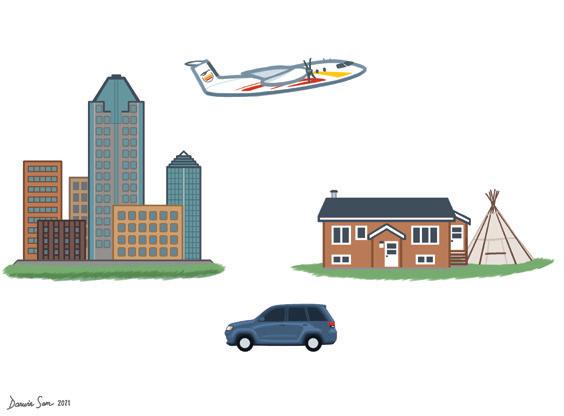




Keep the circle of protection strong ᐁᐅᒄ ᐆ ᒨᔥ ᒉᐧᐄ ᐃᐦᑎᔨᓐ Make it a habit ᐁᐅᒄ ᐆ ᓇᑲᔮ ᒉᐧᐄ ᐃᐦᑎᔨᓐ For more information: creehealth.org/covid KEEP THE CIRCLE OF PROTECTION STRONG THIS WINTER GET TESTED if you travel, gather, have symptoms, or before medical appointments STAY HOME if you’re sick or test positive, and follow isolation recommendations WEAR A MASK when recommended, especially around people with vulnerable health Keep your VACCINATION UP TO DATE Keep the CIRCLE OF PROTECTION STRONG C M Y CM MY CY CMY K COVID_MakeItAHabit_NationAdHorizHalfPage_20221125_v1_print.pdf 1 2022-12-02 2:47 PM ouwahstore@gmail.com www.ouwahstore.com (514) 588-3162 18 Fort-George Road
Marban Gold Mine Project Participant Funding Available
December 7, 2022 — Funding provided by the Impact Assessment Agency of Canada (the Agency) is now available to help the public and Indigenous peoples participate in the impact assessment process for the proposed Marban Gold Mine Project, a new open pit gold mine located approximately 15 kilometers northwest of Val-d'Or, Quebec.
Funding is available for eligible individuals and groups to assist their participation during the impact assessment’s planning phase. During the current comment period, which ends December 21, 2022, the public and Indigenous peoples are invited to review the summary of the Initial Project Description and provide comments. The Agency will retroactively reimburse eligible participants for their participation in this first comment period.
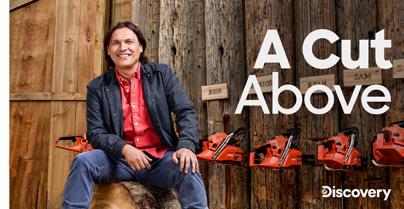

Applications received by January 11, 2023, will be considered.



For more information about the Funding Program, including eligibility criteria and the application form, please visit the project home page on the Registry website, reference number 84117. You can also contact the Participant Funding Program by writing to fp-paf@iaac-aeic.gc.ca or by calling 1-866-582-1884. Details about the project can also be found on the Registry.


As a next step, the Agency will determine whether a federal impact assessment is required for the project. If one is required, eligible applicants will receive additional funding to participate in a second comment period to provide feedback on the draft Tailored Impact Statement Guidelines and the draft Public Participation Plan.
For media inquiries, contact the Agency's media relations team by writing to media@iaac-aeic.gc.ca or calling 343-549-3870. Stay updated on this project by following the Agency on Twitter: @IAAC_AEIC #Marban

Start the New Year right with the most popular TV shows in Eeyou Istchee and James Bay †Number of channels depends on package chosen. *Offer subject to availability and to change without notice. Pricing after 12 months is $118/mo. Taxes and any hardware costs not included. Distributel supplied Optical Network Terminal and Set Top Box(es) required for Internet, Home Phone and TV bundle. Hardware can be purchased, rented or rented-toown; costs vary depending on option selected. Listed monthly price is for bundle described; price will depend on services purchased. Use of Distributel services, including unlimited usage and local calling, are subject to our Acceptable Use Policy. Other Terms and Conditions apply, visit distributel.ca/tc for more info. Call 1-833-264-5945 In partnership with Eeyou Communications PROMO$108/mo* distributel.ca/eeyou Internet 50 Unlimited + TV from Distributel offers the hottest TV channel lineup, supported by a blazing fast 1 Gbps Fibre Optic network. Your favourite shows can be enjoyed without service disruptions - even in bad weather. • Unlimited Internet up to 1 Gbps • Over 150 Hi-Def TV channels available†
Calls for Catholic Church to release residential school records
January 15, 2022
Indigenous leaders across Canada called on the federal government, the churches, and the Vatican to release any remaining records related to residential schools, despite Ottawa’s pleas that it has handed over all its records.
The National Centre for Truth and Reconciliation disputed the government’s claims, saying that records from Library and Archives Canada, from provinces, and others were still missing. Many of the churches were previously denounced for failing to turn over their records and for failing to meet their financial obligations from the Indian Residential Schools Settlement Agreement.
Quebec First Nations launch self-government initiative
May 24, 2022
The Assembly of First Nations Quebec-Labrador launched an Office of Self-Determination and Self-Government to support First Nations that wish to write their own laws. The initiative came after relations reached a low-point between the province and First Nations, with many pointing to Quebec Premier François Legault’s failure to respect the United Nations Declaration on the Rights of Indigenous Peoples and the government’s ultimately successful efforts to impose French-language legislation.
IN REVIEW2022
 by Ben Powless Local Journalism Initiative Reporter
by Ben Powless Local Journalism Initiative Reporter
O’Bonsawin appointed Canada’s first Indigenous Supreme Court judge
October 13, 2022
Michelle O’Bonsawin of Odanak First Nation was appointed as the first Indigenous judge on the Supreme Court of Canada. She was raised in the community of Hanmer, Ontario, an off-reserve francophone community.
Many Indigenous leaders praised the move, which they said was important for both representation but also to have someone familiar with Indigenous culture, teachings and laws. O’Bonsawin previously became the first Indigenous Superior Court Judge in Ontario in 2017.
Hopes grow for MoCreebec recognition
October 13, 2022
The Grand Council of the Crees and the Cree Nation Government signed an agreement to begin discussions that could end with the MoCreebec Eeyoud being recognized as a distinct community. In 2017, the Grand Council recognized the MoCreebec as the 11th Cree community, but they have remained without a land base.
Last October, MoCreebec held a referendum and voted to select Moosonee, Ontario as the base for their new community. Next steps involve negotiations with the federal government to recognize the community that is largely made up of residential school survivors and their descendants who were taken from Eeyou Istchee and sent to school in Moose Factory.
16 the Nation December 23, 2022 www.nationnews.ca
Chisasibi to conduct ground-penetrating radar searches
July 20, 2022
Chisasibi announced in June that it would pursue ground searches at residential school sites on Fort George Island. The announcement came a year after the discovery of 215 unmarked graves at a residential school in Kamloops, BC, rocked the country.
Experts suggested there could be two cemeteries on the island, where two residential schools operated between 1933 and 1981. The community plans to use ground-penetrating radar at the schools, run by both the Anglican and Catholic churches.
Quebec First Nations sign historic education agreement
July 20, 2022
The First Nations Education Council signed a $1.1 billion, five-year agreement in July that would empower 22 First Nations in Quebec to have financial control over their education systems. The agreement is meant to support 5,800 students from kindergarten to Grade 11 based on their communities’ education models and priorities.
Pope’s Canadian tour prompts demands to rescind Discovery Doctrine
August 17, 2022
Pope Francis wrapped up an emotional week travelling across Canada making a number of statements on behalf of the Catholic Church lamenting its role in perpetuating the residential school system, and said he considered the system a “genocide.”
Indigenous leaders have continued to push for the Catholic Church to release all its records relating to residential schools and to rescind the Doctrine of Discovery. Others called for the Church to pay the financial damages that were awarded against it to residential school survivors, and said public pressure had to remain on the Church until it upholds its obligations.
Michael Petawabano elected Chief of Mistissini
August 17, 2022
Michael Petawabano was elected as Chief of Mistissini in a run-off vote July 20, while John S. Matoush was elected Deputy Chief. Petawabano was previously employed in construction before becoming a police officer for 15 years, and eventually working for Cree Human Resources Development. He said his focus would be on education, the economy and social issues.
Wallbridge inks agreement with Cree communities for mine project
September 14, 2022
Wallbridge Mining Company signed an agreement with the Cree Nation Government, Grand Council of the Crees, Waskaganish and Washaw Sibi in August that would allow the company to develop gold mines throughout Eeyou Istchee.

The company identified gold deposits potentially valued at $8 billion at two sites south of Waskaganish. The parties agreed to cooperate on environmental and social impact studies while the mine is deemed viable, at which point an Impact and Benefit Agreement could be negotiated.
Waswanipi elects new Chief and Deputy
September 14, 2022
Waswanipi First Nation elected Irene Neeposh as Chief and Rhonda Oblin Cooper as Deputy Chief in a September election. Neeposh said that her priorities would be staying connected with community members and organizing public events to gather feedback and have discussions with the community.
www.nationnews.ca December 23, 2022 the Nation 17

If you are an Indigenous woman of Eeyou Istchee and you are seeking safety and support, we are here to help you! creehealth.org/services/womens-shelters-robins-net Pîpîchâu Uchishtûn | Robin’s Nest | Women’s Shelter For women and children of Eeyou Istchee suffering from domestic violence 1 855 753-2094 CRISIS LINE Toll Free | Open 24/7 HELP ᐐᒋᐦᐄᐙᐅᐎᓐ WÎCHIHÎWÂUWIN HELPLINE If you need emotional support or to learn about all the services available to you, please contact us: 1 833 632-HELP (4357) creehealth.org















DENIS LAMOTHE MNA FOR UNGAVA PARLIAMENTARY ASSISTANT TO THE MINISTER FOR PUBLIC SAFETY GOVERNMENTAL ASSISTANT TO THE MINISTER RESPONSIBLE FOR THE NORD-DU-QUÉBEC REGION 418-748-6046 denis.lamothe.unga@assnat.qc.ca Wishing you all peace and joy during this Holiday season. May the New Year bring you health and success. Happy Holidays ! Happy Holidays
Politics

Community
Moccasins on the ground
The federal government and the Indigenous Leadership Initiative launched the First Nations National Guardians Network at the United Nations Convention on Biological Diversity Conference of the Parties in Montreal December 9.

Over 170 Indigenous guardian programs already exist but only became a national network with the announcement of the new organization. Environment and Climate Change Canada had previously committed $60 million to the guardian initiatives, increasing the funding to $100 million in 2021.
Up to 1,000 Indigenous guardians will be funded to “monitor ecological health, maintain cultural sites, and protect sensitive areas and species,” according to the federal announcement. Guardians will essentially function as park and game wardens while serving as environmental monitors, both informing and enforcing community policy on protected lands.

“The support, growth and development of the Indigenous Guardians initiative for the past several years has been a key pillar of the Government of Canada’s conservation ambitions,” Environment Minister Steven Guilbeault said in a statement. “The new First Nations Guardians Network will allow
for further autonomy for First Nations in managing their traditional land and water.”

Ottawa committed $5.8 million directly to the network, which will administer remaining funds from the initial $100 million funding. Guilbeault said it was
the first governance model of its kind, based on a nation-to-nation model for land stewardship.
“Canada can only meet its climate change and biodiversity targets through Indigenous conservation,” Guilbeault added.

If you are an Indigenous woman of Eeyou Istchee and you are seeking safety and support, creehealth.org/services/womens-shelters-robins-net Pîpîchâu Uchishtûn For women and children of Eeyou Istchee suffering from domestic violence 1 855 753-2094 CRISIS LINE Toll Free | Open 24/7 ᐐᒋᐦᐄᐙᐅᐎᓐ WÎCHIHÎWÂUWIN HELPLINE emotional support or to learn about all the services available to you, please contact us: 1 833 632-HELP (4357) creehealth.org
Ottawa announces Indigenous Guardians Network to oversee protected areas
Photos and Story by Ben Powless, Local Journalism Initiative Reporter
United Nations data shows that Indigenous peoples, despite making up only 6% of the world’s population, help protect 80% of the world’s biodiversity.
Valérie Courtois, ILI Director, said that guardians were the “moccasins and mukluks on the ground.” When she started working with guardians, there were only 30 programs, but now there were 760 proposals in British Columbia alone.
“Indigenous peoples are proven stewards of biodiversity, and Indigenous Guardians are on the ground caring for land and water we all depend on,” Courtois said. “With these investments, Canada is offering a model for respecting and supporting the Indigenous-led stewardship – a model we hope spreads around the world.”
In 2014, Courtois helped develop a Guardian proposal for $500 million in funding, based on the average program with a budget of $1 million. Courtois said that everyone supported it – the then-governing Conservatives saw it as a job-creation program, Liberals viewed it as reconciliation, while the Greens considered it an environmental initiative.
They managed to secure $25 million in seed funding. It was important for Courtois that all the funding decisions went through this network, and “not through Gatineau,” where ministry headquarters are located.
By contrast, she pointed to Environment Canada having one environmental officer for Labrador, the size of Texas, based in Goose Bay and without
a travel budget. In comparison, the Indigenous Guardian program is a proactive approach to environmental monitoring.
The next challenge for the network is to establish a profession, which will require a curriculum that responds to Indigenous laws.
“What gives me hope isn’t what’s happening within those walls, but what’s happening on the ground,” she added. “I hope it’s an example for the rest of the world.”
Speaking at the same event, Grand Chief Mandy Gull-Masty said that the Cree Nation was already part of the Guardians Network, with four Eeyou Istchee Land Keepers.
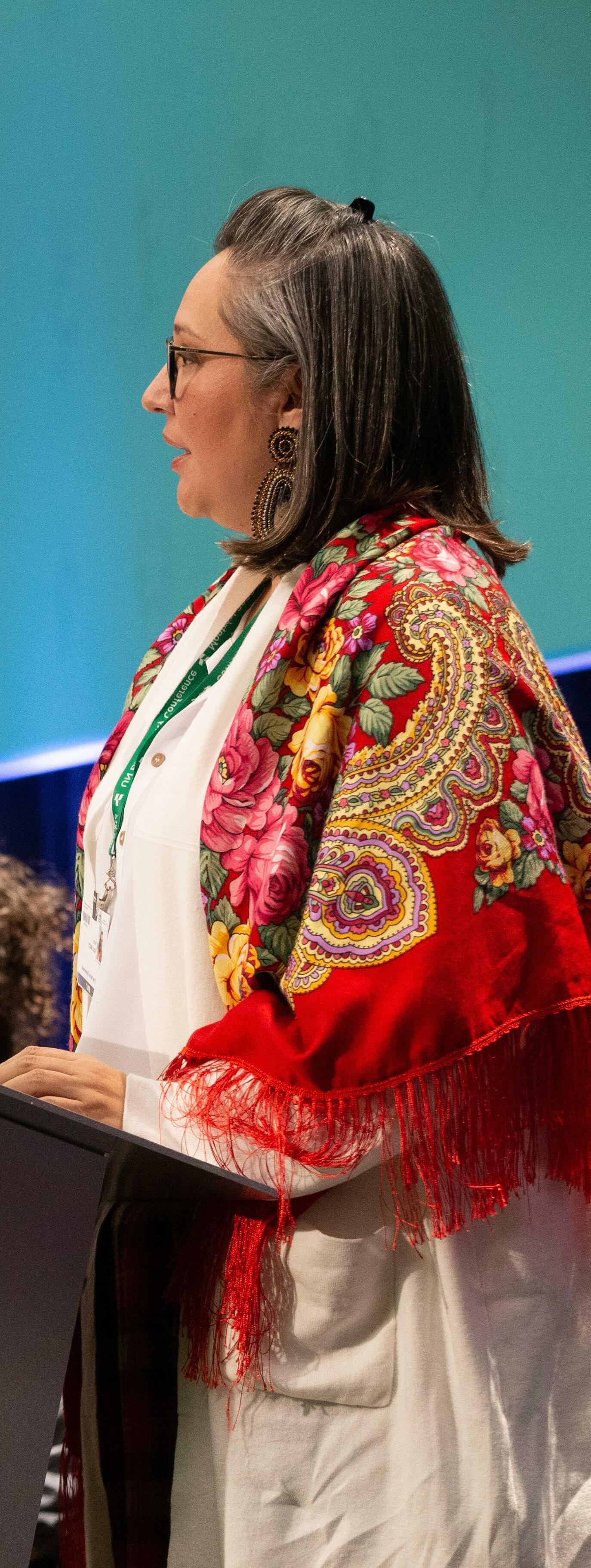
She said the CNG had worked with the Indigenous Leadership Initiative, which helped with training, organization, and how to adapt it to Cree realities.
At a recent council board meeting, a resolution was passed to develop a training program with the Centre d’études collégiales à Chibougamau. Gull-Masty said the federal government plans to create an additional 19 Land Keeper positions and is pressuring Quebec to fund 50 game warden positions.
“One of my goals is to see wildlife protection officers who are under the authority of the Cree Nation,” Gull-Masty told the Nation. These would combine the roles of Land Keepers, park wardens and game wardens, based on a plan to create several parks throughout Eeyou Istchee.
www.nationnews.ca December 23, 2022 the Nation 21
Naming the Stars
Ouje-Bougoumou hosts its Youth Recognition Awards
by Patrick Quinn, Local Journalism Initiative Reporter
Ouje-Bougoumou held its Annual Youth Recognition Awards November 25 to highlight the positive contributions young people make to the community.
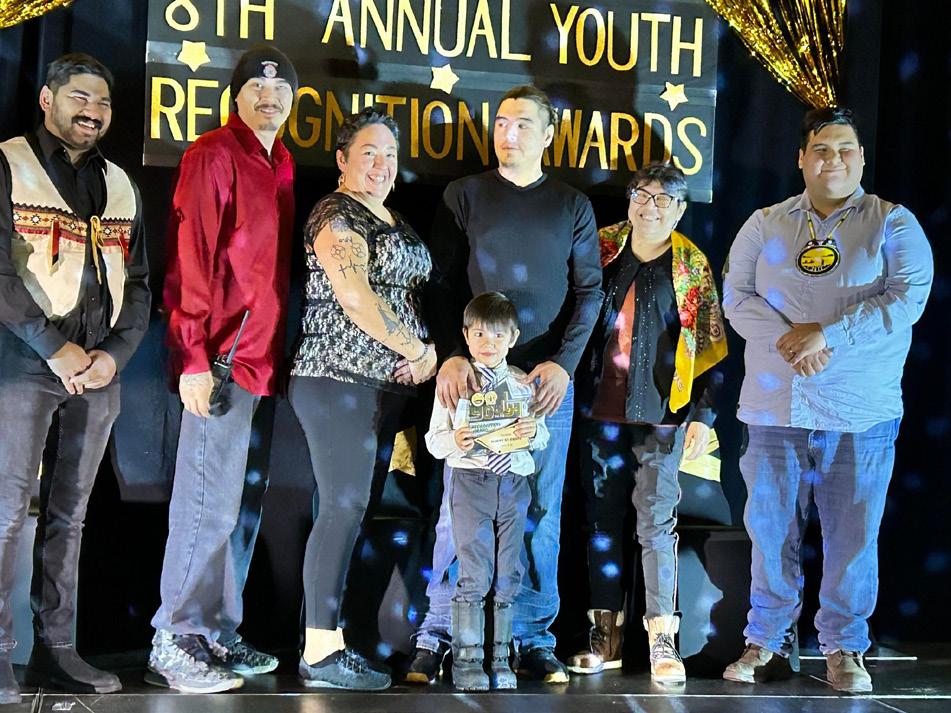
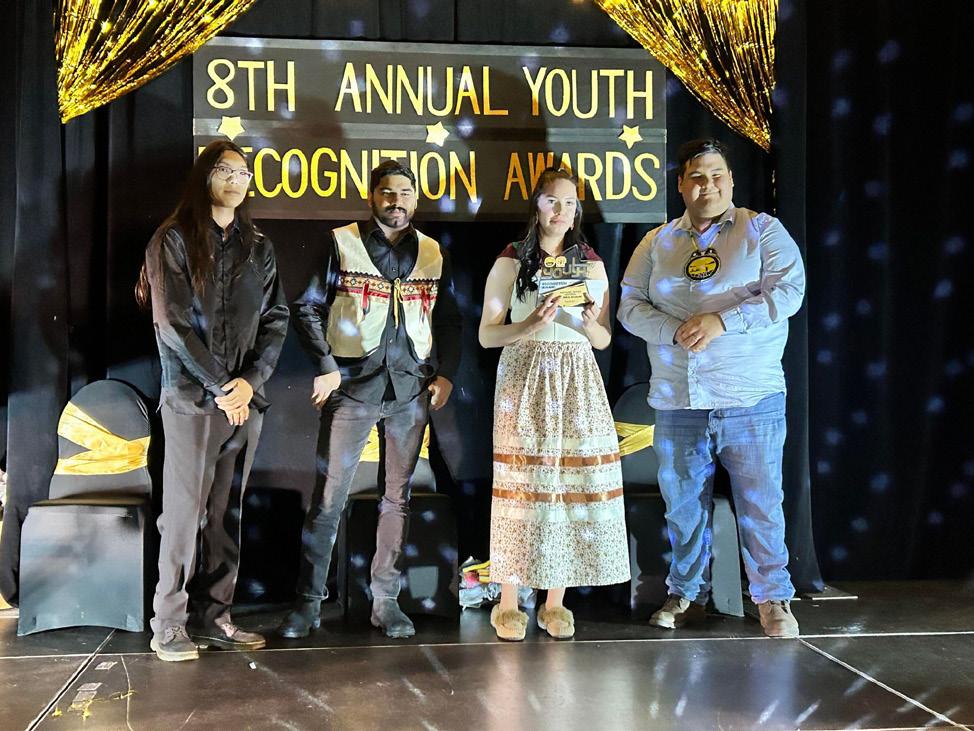
“The whole reason for this event is to show our youth we have so many great role models,” said Ouje-Bougoumou Youth Chief Miguel ShecapioBlacksmith. “If youth are having a tough time, they can know there are people who won awards that were able to overcome a difficult childhood and become great role models.”
Last year, the role model award was renamed in honour of the late Nathaniel Bosum, who was widely respected as both an entrepreneur and motocross racer. On November 5, Bosum was inducted into the prestigious Canadian Motocross Association Hall of Fame in a ceremony attended by his family.
Tanika Bosum was honoured with the Nathaniel Bosum Memorial award in the 13-17 category. Janie-Rose Bosum, who graduated at top of her class before attending college, earned the Education award. Other winners in this age group were Drake Bosum for Sportsmanship, Wabana Petiquay for Culture, Tianna Hughboy for Artistic/ Talent and Darren Bosum for Humanitarian.
Hosted by Brenda St-Pierre, this year’s gala featured awards that were renamed to add a little pizzazz. The Humanitarian award for ages 18-35 was given to Miranda Coonishish for actively volunteering to make her community a better place. The Life-Saver award, celebrating a courageous youth who went above and beyond as a frontline worker, went to Isaiah Wapachee.
In the older youth category, Martin Metabie was given the Nathaniel Bosum Memorial award while his sister Kecia Metabie won for Education. Albert St-Pierre was presented the newly renamed Phoenix award, which celebrates “youth who rise with new life like a phoenix and display exceptional determination and stamina as they overcome significant life challenges.”
“Albert St-Pierre has gone through a rough time but over the last year we’ve seen him become a great leader,” Shecapio-Blacksmith told the Nation. “He created a men’s association in our community and is vice president throughout the whole Cree Nation. You always see him involved in the
community – a lot of people noticed he’s changed.”


Celebrating one year of sobriety a few days after the event, St-Pierre shared on social media the day he decided to walk away from drugs and alcohol, explaining he made the choice to “live again” to the fullest. He dedicated this award “to everyone who’s making that fight to be happy and turn their lives around ... because above every storm there is sunshine.”
Also in this category, Allisson St-Gelais won MVP (Most Valuable Parent), Dorianne Bosum won the Culture award, Kurt Shecapio-Blacksmith won for Sportsmanship and local Youth Chief Miguel ShecapioBlacksmith fittingly won for Leadership.
Deputy Grand Chief Norman Wapachee and Cree
Nation Youth Council (CNYC)
Grand Chief Adrian Gunner delivered inspiring speeches as many of last year’s winners passed the torch to this year’s selection. Gunner presented the Leadership award, highlighting that everyone recognized were “superstars”.
“It was an awesome event,” Gunner said. “We’re going to recognize youth of every community on our social media and our Inspire Hope conference that’s happening in March in Whapmagoostui.”
Gunner told the Nation about exciting cultural exchanges between the Youth Council and other First Nations and Inuit groups. It began last year on National Truth and Reconciliation Day, when the Youth Chiefs were meeting in Chisasibi at the same time as Nunavik’s Qarjuit Youth Council (QYC).
22 the Nation December 23, 2022 www.nationnews.ca Updates
Community
Marching together to honour residential school survivors led to an invitation to speak at QYC’s annual general assembly. After inviting the QYC to the AGA in Old Nemaska, the Cree youth issued an open invitation, leading to visit by a contingent from the Atikamekw Nation Youth Council.
After resolutions were passed to bring back the regional canoe brigade and initiate a Nation-to-Nation table, CNYC decided to create a cultural exchange expedition.
“We’re inviting a small delegation from each Nation to come and have a canoe journey with us,” said Gunner. “We can exchange cultures or language so our youth are open to other First Nations and Inuit groups. We’ve yet to set a date or location but the idea is to canoe on a protected area to highlight protected areas of Eeyou Istchee.”
Invitations have also been extended to Naskapi and Innu youth along with the First Nations of Quebec and Labrador Youth Network.
“Deputy Youth Grand Chief Jordan Masty said we’re going to need each other in the future,” Gunner shared. “It’s best to make these meaningful relationships earlier on in
our lives rather than when it’s crucial.”

Wapachee appreciated the warm welcome in his home community and presented an education award, discussing how his generation was caught between traditional and modern systems.
“I went through elementary school while my parents were out hunting and trapping,” Wapachee recalled. “I learned from my father growing up and when I was taken away, I was able to engage in schooling. It empowered me –education is the future of our Cree Nation.”
Wapachee remembers when Matthew Coon Come’s father Alfred took the older boys out on the land for a week-long nomadic experience, walking with snowshoes and pulling toboggans around Mistassini Lake to camp and fish.
“I felt that was really who I was,” shared Wapachee. “We need to understand the histories of Aboriginal peoples and how federal policies have impacted us to understand our current issues. Once your vision is clear, it acts as a magnetic force that will pull you in the direction you want to go in life.”

Wîchihîwâuwin Helpline Team is ready to support you 24/7. This service is confidential and adapted to your needs, with Cree speakers and traditional healers available.

www.nationnews.ca December 23, 2022 the Nation 23
ᐐᒋᐦᐄᐙᐅᐎᓐ Are you going through a tough time? If you need to talk, we’re here for you. creehealth.org/helpline WÎCHIHÎWÂUWIN HELPLINE 1-833-632-4357 (HELP) 24/7 • free • safe • confidential Our
“The whole reason for this event is to show our youth we have so many great role models”
- Miguel Shecapio-Blacksmith.
don’t speak French and don’t work” or “Joyce Echaquan’s case was dealt with in Joliette and is closed”, were quickly debunked by experts and media, but their misinformation was appealing enough to
the list to vote.


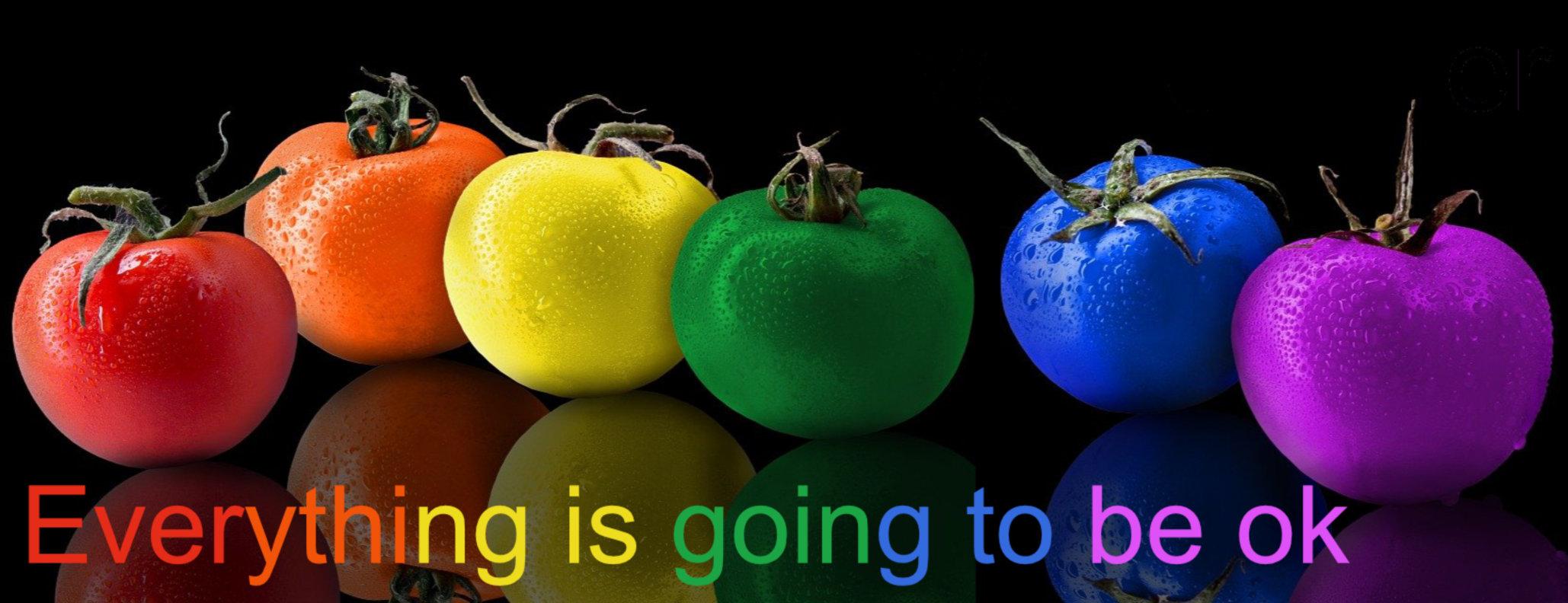



Plus, people who were previously on the provincial list were suddenly not, polling stations changed locations up to two times without notice in some communities, and the advanced poll dates changed in Ungava even if they had started.
Quite a sketchy roll-out for such a democratic process. It fits Quebec’s nar rative to say Indigenous communities don’t vote anyways, but even when we want to there are unnecessary hurdles. Voting shouldn’t be complicated.

Legault once promised he would reform Quebec’s voting system. If we look at the election results, CAQ got a majority government with 41% of the votes. That
A new voting system of the mixed-member proportional representation type would allow a much different scenario from the one we got on October 3, but for obvious reasons Legault now
24 the Nation December 23, 2022 www.nationnews.ca www.underthenorthernsky.com
Staying positive
by Sonny Orr
Iused to think that putting up Christmas decorations right after Halloween was rather early. But now, more than a month later, I realize the wisdom of that logic. It’s akin to shopping for presents before the December madness that has tortured us for the last century. Or you could think of it as the need to gather provisions before the cold weather arrives.
I always liked Christmas and what it meant. I’m talking about the mystery behind the reason we go nuts in the shopping malls. The need to give and receive is relatively recent; most of our people simply did not have the money to spend on gifts until the past couple of generations.

As the population grew along with the number of retail outlets across the continent during the last century, the desire to give overcame the traditional concept of Christmas. In other words, the birth of a certain being who would, centuries later, become a driving force in a belief system.
Around Christmas, the outlines of those belief systems get a little blurry. Now generalized to “The Holidays”, this part of the year means we have some time off from the daily grind we endure in order make the money we need to spend during those holidays. Ahh, life in general, never a simple concept.

As I look out across the frozen landscape called my backyard, I see that others, only a few degrees lower in latitude, are walking in running shoes through gloriously sunny and snowless terrain. This, even as they complain that their footwear
is getting too acclimatized to southern Canada. Will someone once again come up with moccasins to cover just about every temperature range and humidity index? That’s on my Christmas wish list.
Only 1,000 kilometres away, late fall is still present and waiting for that funny thing called winter. I meet seasoned travellers from the far north who complain about the cold in the south. “It’s cold to the bones,” claimed one recent traveller returning home to Inuit country.
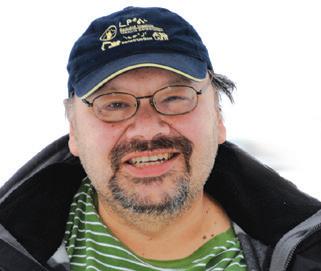

I wasn’t surprised. I’ve spent many a winter in the so-called south, only to find the snowless city almost unbearably cold. Every inch of exposed skin was a candidate for frostbite. Amazingly, I survived Montreal’s humid winters, and vowed never to complain about our dry cold that stays outside and doesn’t penetrate below a few layers of normal winter clothing. At least our dry northern snow is clean and free of slush until April.
I used to think that Christmas was a great time for everyone. A time to reflect on our blessings and to perform or benefit from a random act of kindness that reinforced that Christmassy feeling in an old grouch like me.
On occasion, I would get a little sad around this time. But that’s now pretty much behind me as I welcome the cries
of joy from the little grandchildren who repopulate our empty nest, filling it with happiness. Yes, all that work, sacrifice and other little things like blood, sweat and tears are washed away by sharing love, friendship and happiness with children. I’ve now hung up my Grinch outfit for good.
On that note, some rules for Christmas:
First, believe in Santa Claus, mainly because he can take the blame for that ugly sweater or duplicate coffee pot –or because he forgot to make a gift for the cousin or nephew who you see only once a year. Who? Oh yeah, the kid in the middle!
Don’t forget about chocolate. You never go wrong with chocolate.
The usual fruitcake? Try the artisan kind. Those are never wasted in the garbage only to become worm food when the ice melts.
Finally, socks are the best gift. They are something you can lose but always need.
So, as the days wind down to Christmas stocking time again, let’s not forget to thank Santa – with plenty of electronic money transfers, please! The milk and cookies only go so far! Sorry, that’s the Grinch in me that I forgot to put away. Happy Holidays everyone!
www.nationnews.ca December 23, 2022 the Nation 25
Rez Notes
T T T
I always liked Christmas and what it meant. I’m talking about the mystery behind the reason we go nuts in the shopping malls.
Give a nudge to
Pond dweller
Garage job
Eyelashes
French and Spanish, e.g.
Click the OK button
Soothsayer
Altar avowal
Bashful
Cabernet holder
"All the Old Knives" actor
One of the Brat Pack
Reinforce
"National Velvet" author Bagnold
Coming up
Greedy type
Big furniture
Egyptian beetle
Word before
Sesame oil retailer
Asparagus stalk 11 Decorative 39 Rio Grande
Feel poorly dog or shot source
Good news on 64 SNL segment enamelware region Wall Street 65 Lab procedure
"Hurry up!"
O-shaped
Warm-hearted 41 Battering wind
Palm starch 42 "I'm No Angel"
Safe from a actress
Container weight DOWN skunk 44 Grisham
Fatten for 1 Rand McNally 22 Carolina college character slaughter product 26 Amsterdam 47 Flip (out)
And so on, 2 Whistle wearer setting 48 Bring up briefly 3 1980's White 27 Record holder? 49 Michelins, e.g.
Make a scene? House name 28 Type of butter 50 Golf shoe
Age, as tires
Boundary or brittle feature

Destructive
Less than stable
Metal coating
Toupee, slangily
Having a lot to
Drunkard
First garden
Get cracked, as
Makes inquiries beetle
"Mite" anagram
Sportage maker
26 the Nation December 23, 2022 www.nationnews.ca
5
14
15
16
17
19
20
21
23
24
25
28
32
37
51
53
54
5
6
56
7
32
58
33
55
60
8
57
61
34
59
Crossword by Margie E. Burke Copyright 2022 by The Puzzle Syndicate 1 2 3 4 5 6 7 8 9 10 11 12 13 14 15 16 17 18 19 20 21 22 23 24 25 26 27 28 29 30 31 32 33 34 35 36 37 38 39 40 41 42 43 44 45 46 47 48 49 50 51 52 53 54 55 56 57 58 59 60 61 62 63 64 65 Here’s another edition of the Nation’s puzzle page. Try your hand at Sudoku or Str8ts or our Crossword, or better yet, solve all three and send us a photo!* As always, the answers from last issue are here for you to check your work. Happy hunting. Puzzles PREVIOUS SOLUTION: Solution to Crossword: D A B S O C C U R A S A P U T A H R O U S E V I N E M E S A A M B A S S A D O R B A S M A T I P A T E N T O M G C O C A C O L A U S E R C O N T R A S T C R I E D P R O S Y P L Y H A T E S L O P E S P U R E R A S C A N T F O R G O F E R O C I T Y C A N E R O S E M A R Y C A T A L T E R S L E E T I D E D I A G N O S T I C H A I R A C R O R O A C H A T O M M E A N S P R E E N E S S 1 759 427 4 1 5 674 5 87 6 1 9 © 2022 Syndicated Puzzles 4159 1237 53 57 2541 46 81 6832 5763 © 2022 Syndicated Puzzles 358627914 762941853 419835627 531498276 286753491 947216538 193584762 875362149 624179385 STR8TS No. 625 Medium 215643 9865734 894312 873645 7634598 341287 543267 3247856 458921 6 9 2 1 7 How to beat Str8ts –Like Sudoku, no single number can repeat in any row or column. But... rows and columns are divided by black squares into compartments. These need to be filled in with numbers that complete a ‘straight’. A straight is a set of numbers with no gaps but can be in any order, eg [4,2,3,5]. Clues in black cells remove that number as an option in that row and column, and are not part of any straight. Glance at the solution to see how ‘straights’ are formed. Previous solution - Tough SUDOKU To complete Sudoku, fill the board by entering numbers 1 to 9 such that each row, column and 3x3 box contains every number uniquely. For many strategies, hints and tips, visit www.sudokuwiki.org If you like Str8ts check out our books, iPhone/iPad Apps and much more on our store. The solutions will be published here in the next issue. You can find more help, tips and hints at www.str8ts.com No. 625 Medium Previous solution - Easy
ACROSS 1 Stridex target
9 Grocery holders
Moving right ____....
29
36
38
62
9
35
39
10
63
40
12
41
13
43
18
45
46
48
4
30
51
31
52
Long story lips
Raven's remark lose?
Comparative
Holmes or Couric
End racial word
Oration station separation
Bring back
Caesar's seven


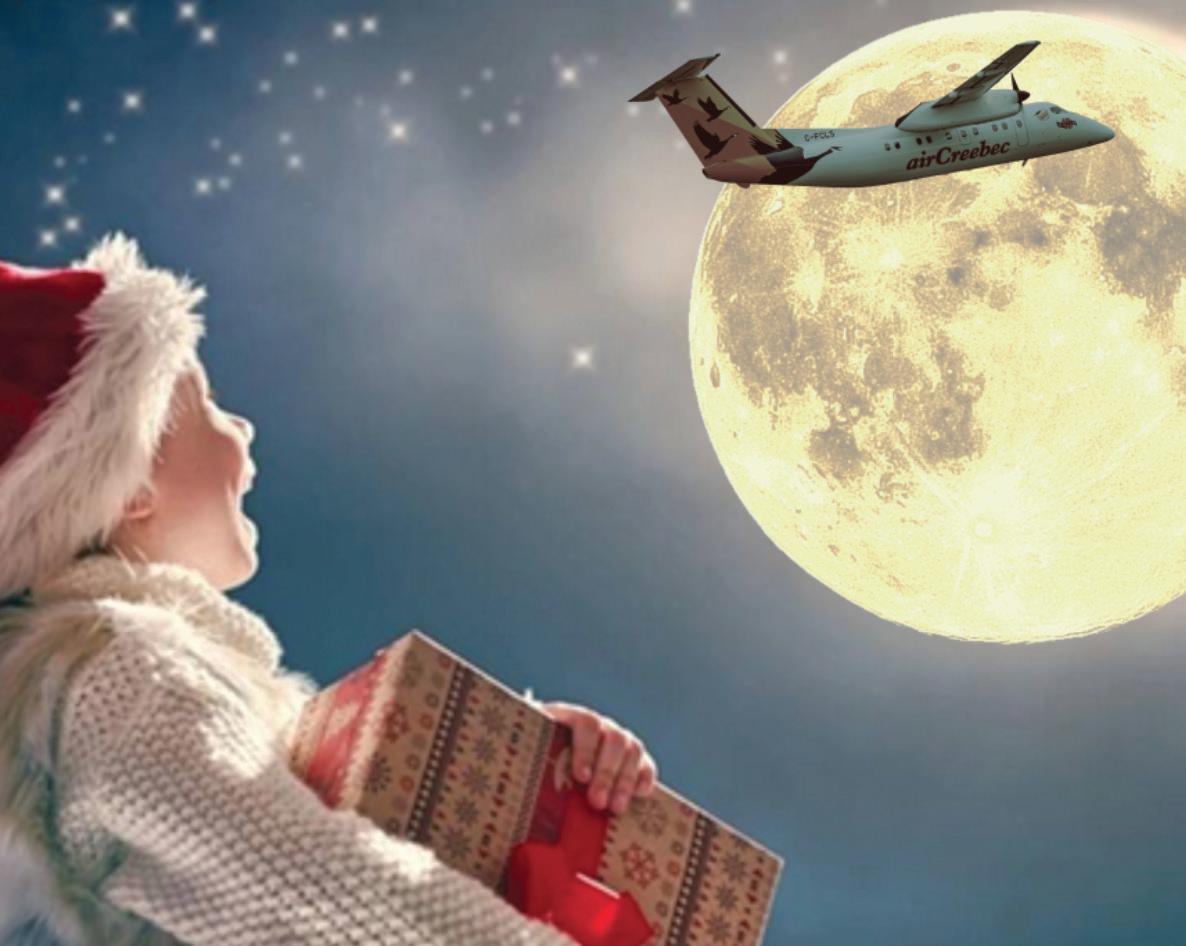





























































 by Ben Powless Local Journalism Initiative Reporter
by Ben Powless Local Journalism Initiative Reporter
































